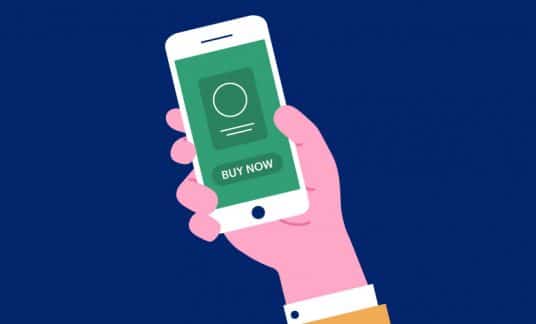There’s no doubt about it: Ecommerce is here to stay.
People make purchases online for the ease and convenience it offers. But even that can be botched if you aren’t careful. Earn the approval and trust of your buyers during their purchase (and post-purchase) experience and you could generate customer loyalty that lasts a lifetime.
Jeff Bezos, founder and chief executive of Amazon.com, summed it up nicely when he said: “We see our customers as invited guests to a party, and we are the hosts. It’s our job every day to make every important aspect of the customer experience a little bit better.”
Here are 10 steps for how you can offer the best ecommerce customer service:
For Customer Support for Ecommerce, Follow These 10 Tips
In 2019, ecommerce accounted for $3.5 trillion in U.S. dollars spent worldwide, according to Statista. And that figure is only projected to increase. To get your share of that growth, you’ll need an airtight strategy to win at customer service.
1. Enhance Your Availability
With the many channels available to online shoppers these days, it’s no surprise that they want answers to their questions and they want them fast. According to the Zendesk Customer Experience Trends Report 2019, the second most important aspect of a good customer experience is prompt issue resolution, noted by 49% of those polled. (The first being that the customer service rep knows how to resolve the issue.)
To provide swift responses, use automated chatbots and live chat features on your website. Also consider providing round-the-clock call center support for immediate, personalized assistance. According, to Zendesk’s report, 36% of people polled indicated this as one of the most important aspects of a good customer experience, securing its place among the top 3 responses.
Here’s an example of a chatbot on HubSpot’s home page, clearly visible at the bottom of the screen. With one click you have an instant option to filter your query. Depending on your reply, you’re given a different answer. And if none of the options answer your question, you can engage a representative by clicking a live chat link.

2. Make It Easy to Find Answers
On a similar note, don’t make potential or existing customers work to find the information they’re seeking.
According to Zendesk’s report, 20% of customers surveyed indicated that not being able to find the information they need online is the most frustrating aspect of a bad customer experience. What’s more, 72% said they have a more favorable view of companies with navigable websites.
So, make your website or ecommerce store easy to navigate. Place a search bar prominently on your site to make it easy for users to type the names of items they’re seeking. Also, add a frequently asked questions section. Include educational content to provide a knowledge base for how to use products and services.
3. Add Clear Callouts
When users have customer service issues in ecommerce land, they want a quick solution. Make clickable buttons and contact links hard to miss. These can come in handy for users before and after a purchase. For instance, after reading a product description on your site, a shopper could have additional questions.
By having a visible callout with a link for customer service assistance, shoppers know they have additional support right at their fingertips. Also, be sure to offer the same prominent customer support links in any emails or messaging regarding a client’s order.
4. Leverage Social Media
When you’re meeting your customers on multiple channels, don’t forget social media. Find out which platforms your customers prefer using most by searching different social media outlets to see where your brand is being mentioned. Consider focusing resources there.
Engage users in conversations about your brand, products or services. Monitor feedback on social channels for ways you can improve. If questions arise, you’ll be at the ready to provide quick answers or links to helpful educational content.
While you might be able to address a complaint or ecommerce customer service concern entirely through social, if there are too many back-and-forth messages or personal information is required, it’s time to segue to a private conversation. Once you’ve addressed the user’s concerns, be sure to post a thank you.
Though it might be unnecessary depending on your volume, certain customer service platforms can be integrated with social media. They can create support tickets whenever a message is posted on social. They can also allow you to monitor social networks in real-time. Salesforce’s Service Cloud Einstein is one example.
5. Consider an Omnichannel Approach
The impact of ebusiness on customer service has led to a shift from an in-person, brick-and-mortar shopping experience to a multi-channel one. And while you might already be reaching potential and existing customers via multiple channels (including social media), omnichannel takes this one step further.
Instead of having separate experiences via email, chat, text or telephone support, an omnichannel approach actually integrates all supported channels regardless of the device used. Zendesk Suite is one example of ecommerce customer service at omnichannel level.
The goal? To improve customer satisfaction by providing seamless customer service interactions.
How? Because all devices and platforms are interconnected, you won’t miss a beat, and more importantly, neither will the customer.
Your customers can start a transaction on a desktop, pause and pick up where they left off on a cellphone. Similarly, any member of your team can pick up where they last left off and be in the know regarding the previous conversation with the contact or their last interaction with your brand. This increases efficiency and eliminates customer frustration about repeating the reason they’re contacting you.
Based on proprietary benchmarks, Zendesk projects that omnichannel support could increase a company’s return on investment more than 100%. Other projected highlights? Reduce handle times to less than 5 minutes on average and save 25 hours of agent time.
6. Personalize Interactions
According to a report by customer data platform Segment, 44% of consumers say they likely will become repeat buyers with a company that’s provided a personalized buying experience. In terms of where personalization matters most, customer service takes second place behind web experiences.
Interestingly, while text messages have high open rates, HubSpot notes customer support via text messaging is best received when it’s personalized. Recipients appreciate the same effort that you’d put into a 1-on-1 conversation or email.
It’s clear personalized support is still valued amid ever-increasing technology too. So much so, that while chatbots have proven their worth, users have reported disliking them most often for issues circling back to lack of personalization. The top 3 reasons users gave for disliking chatbots? They don’t always get their question answered, they prefer to talk to a human and they feel chatbots are too impersonal, according to Narvar’s 2018 Consumer Report.
7. Offer Painless Returns
If your ecommerce business allows for returns, exchanges or refunds, focus on providing a smooth process, whether you’re handling a post-purchase issue concerning return shipping, damaged products or unwanted purchases. This fosters brand loyalty and competitive advantage.
Specifically, Narvar’s report goes on to indicate 76% of buyers would give a company repeat business if the return and exchange process was easy, with 69% indicating immediate refunds having the same effect.
8. Be Proactive
Zendesk notes 15% of customers find it important for the company they’re dealing with to proactively reach out to offer support. If you haven’t tried contacting your customers in anticipation of their needs, try it.
Send order updates and shipping reminders via text or email. Following a purchase, email links to owned content that complements their purchase. For example, you could send a link to an article, how-to guide or video you’ve created about ways to get the most out of the product purchased.
As HubSpot’s chatbot shows, you also can be proactive with your automation. Offer options you think your users could benefit from and further helpful information depending on their selection.
9. Track Performance
You likely have a customer relationship management system in place. Use it to gather valuable insight on a user’s history and interactions with your company. Improve your processes through the strategic analysis of relevant key performance indicators. Churn rate, net promoter score, the average time to resolution and the average number of follow-ups per ticket are a few examples.
Take a look at your channel-specific volume and peak times. Also, monitor topics that are trending with your customers. What takeaways can you gather to improve your ecommerce customer service experience?
10. Get Feedback
Customer service and support in ecommerce doesn’t end there. Whether you’re on the phone with a happy customer or reaching out proactively, request feedback. Ask customers to post their reviews on social media or rating platforms about the excellent customer service you provided.
Send out surveys to gather more responses and determine possible areas of improvement. By doing so, you could uncover new pain points. You’ll also have a better understanding of your customers’ likes and dislikes in terms of your product and the service they received. Use the information you gather to improve yourself and the customer experience.
Also, gather ideas for marketing strategies and get inspiration for ways to elevate your brand. Review the responses to see what areas need your attention and prioritize which ones to act on.
Unfortunately, 48% of customers don’t believe brands take action on the client feedback they receive, according to a customer service report by Microsoft. In spite of that, 77% of customers actually have a more favorable view of brands that request and accept customer feedback.
Time to Revive Your Ecommerce Customer Service Strategy
Now that you know some of the best ecommerce customer service steps to take, put them to action.
Satisfy your audience with customized, consistent and effortless pre- and post-purchase interactions. Increase your availability and response times, and reach out to buyers along the customer journey to ensure a great customer service experience. Monitor your performance and strive for continued growth too.
Keep in mind: Customers who’ve had great experiences spread the word — and those who’ve had bad ones do the same. Which would you prefer?














